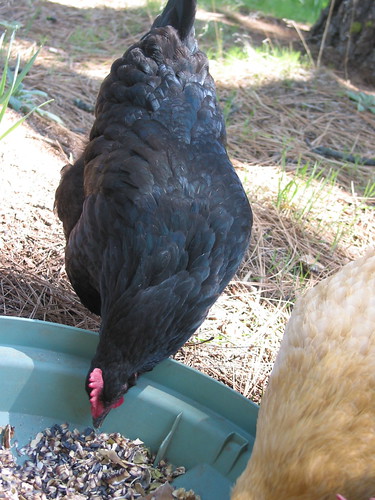How should I set up my garden, and some ideas?

Image by sierravalleygirl
Question by Ilya: How should I set up my garden, and some ideas?
I am planning to set up a garden in my backyard any ideas of how to set it up or what i should do and where to go thanks
Give your answer to this question below!

We need a lot more info. Like how much sun does it get, how much space do you have, what do you want to grow, where are you located?
Jimmy B
September 9, 2013 at 11:41 pm
Make sure you pick a spot that gets midday sun, and if you have the room, I would setup small mounds, at least 3 rows and with at least enough room to walk in between them.
Position everything around the sun, make sure you don’t plant anything where it will give shade to the plants next to it.
Unless your planning on a big garden, I would say to not grow corn for your first couple seasons, they are a pain and need a few rows to even grow.
The easiest things to grow are peppers and tomatoes, make sure when you buy to get the pest resistant plants, I believe they are labeled VFN (off the top of my head).
It would be wise to setup a drip line, but if you plan on watering by hand every day then you won’t need that.
Also make sure to get some of those bright yellow white-fly traps, I usally just stick them to the end of a popsicle stick and place them in the ground between plants. They work well at ridding the area of white-flies and aphids.
I usally buy my plants from OSH, if they happen to die, OSH will replace them for free.
Use plenty of fertilizer like cow or chicken manure and also some perlite and vermiculite to aerate and preserve water.
One last thing, be sure to turn the soil over well before planting, add the perlite, vermiculite and fertilizer over the area your going to use and till the hell out of it with a shovel, or a rototiller.
GOOD LUCK!
Don Dinero
September 10, 2013 at 12:15 am
You need to start by analyzing the sunlight in your garden. Most people underestimate the amount of sun their garden needs. Generally 6 hours or more of direct sunlight is considered full sun, appropriate for most vegetables and about 80% of the flowering plants out there. 4-6 hours is considered part shade. 2-4 hours is considered part sun or dappled shade. Less than 2 hours is full shade. Very few plants can thrive in full shade (relatively speaking).
Remember to plan for trees that are growing close to the edge of your anticipated planting areas. A garden can start out in sun but quickly become shaded as trees around it grow. Also the angle of the sun will determine the intensity of it’s rays. Afternoon sun tends to be hotter while morning sun is less intense. Sunlight will also change with the seasons so keep this in mind as well.
Now determine your zone. (see usna link below). This is based on the general climate where you live and what kind of plants can survive/thrive there.
You will need to assess your soil texture; is it sandy, clay or loam? There are various methods of doing this from the squeeze test, to the jar of water test, to sending it out to a local cooperative extension for chemical analysis. It is helpful to know if your soil runs acidic or alkaline. There are test kits in garden centers that can help you with this. You will very likely need to amend the soil with compost you can either create or purchase.
Soil testing can get pretty complicated when getting into N,P,K stuff but don’t get too intimidated by this.
There is a link below from HowStuffWorks.com that gives you very basic Gardening 101 lessons. There is lots of info online, and there are plenty of good books out there to help you delve further.
Now you need to determine what your want to grow based on what you’ve discovered. It would be a good idea to do some online research to find out what works in your zone so you are well-armed before succumbing to the temptations of the garden center. Keep in mind the amount of maintenance you are willing to perform and be sure to buy plants accordingly.
It’s a lot of work but is very rewarding. Good Luck.
sassy sue
September 10, 2013 at 12:38 am